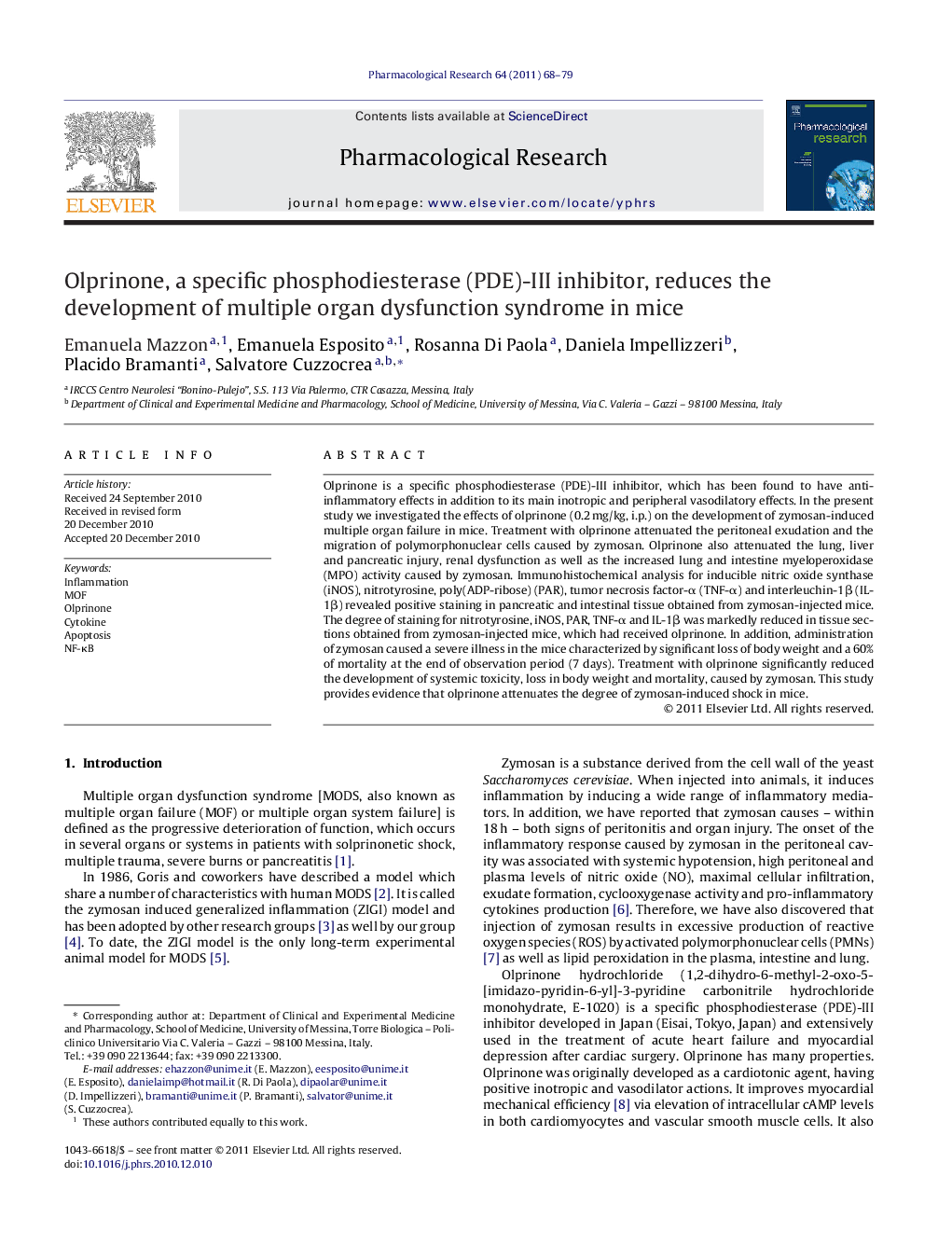| Article ID | Journal | Published Year | Pages | File Type |
|---|---|---|---|---|
| 2562416 | Pharmacological Research | 2011 | 12 Pages |
Olprinone is a specific phosphodiesterase (PDE)-III inhibitor, which has been found to have anti-inflammatory effects in addition to its main inotropic and peripheral vasodilatory effects. In the present study we investigated the effects of olprinone (0.2 mg/kg, i.p.) on the development of zymosan-induced multiple organ failure in mice. Treatment with olprinone attenuated the peritoneal exudation and the migration of polymorphonuclear cells caused by zymosan. Olprinone also attenuated the lung, liver and pancreatic injury, renal dysfunction as well as the increased lung and intestine myeloperoxidase (MPO) activity caused by zymosan. Immunohistochemical analysis for inducible nitric oxide synthase (iNOS), nitrotyrosine, poly(ADP-ribose) (PAR), tumor necrosis factor-α (TNF-α) and interleuchin-1β (IL-1β) revealed positive staining in pancreatic and intestinal tissue obtained from zymosan-injected mice. The degree of staining for nitrotyrosine, iNOS, PAR, TNF-α and IL-1β was markedly reduced in tissue sections obtained from zymosan-injected mice, which had received olprinone. In addition, administration of zymosan caused a severe illness in the mice characterized by significant loss of body weight and a 60% of mortality at the end of observation period (7 days). Treatment with olprinone significantly reduced the development of systemic toxicity, loss in body weight and mortality, caused by zymosan. This study provides evidence that olprinone attenuates the degree of zymosan-induced shock in mice.
Graphical abstractOlprinone is a specific phosphodiesterase-III (PDE-III) inhibitor, which has been shown to have anti-inflammatory effects in heart failure. In the present study, we investigated the effects of olprinone (0.2 mg/kg, i.p.) on the development of shock caused by zymosan.Treatment of mice with olprinone attenuated the peritoneal exudation and the migration of polymorphonuclear cells caused by zymosan. Olprinone also attenuated the lung, liver and pancreatic injury, renal dysfunction as well as the increased lung and intestine myeloperoxidase (MPO) activity caused by zymosan. Immunohistochemical analysis for inducible nitric oxide synthase (iNOS), nitrotyrosine, poly(ADP-ribose) (PAR), tumor-necrosis-factor-α (TNF-α) and interleuchin-1β (IL-1β) revealed positive staining in pancreatic and intestinal tissue obtained from zymosan-injected mice. The degree of staining for nitrotyrosine, iNOS, PAR, TNF-α and IL-1β were markedly reduced in tissue sections obtained from zymosan-injected mice, which had received olprinone. In addition, administration of zymosan caused a severe illness in the mice characterized by significant loss of body weight and a 60% of mortality at the end of observation period (7 days). Treatment with olprinone significantly reduced the development of systemic toxicity, the loss in body weight and the mortality (10%) caused by zymosan. This study provides evidence that olprinone attenuates the degree of zymosan-induced shock in mice.Figure optionsDownload full-size imageDownload as PowerPoint slide
